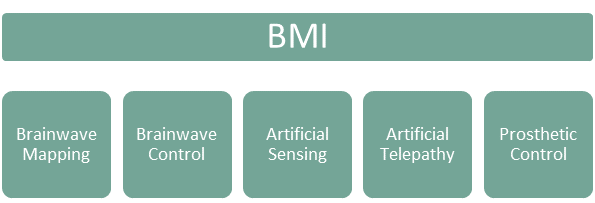Unlocking the Power of Brain Machine Interfaces
By: Nick Maynard

BMIs (Brain Machine Interfaces) are one of the most promising fields of emergent technology, with many exciting and truly transformative use cases potentially being enabled by the technology. To many, BMI technology would be considered the stuff of science fiction, identified with Robocop or Star Trek: The Next Generation. In practice, basic forms of BMI technology have already been utilized in the medical field for a number of years. This existing use principally focuses on the cochlear implant, a medical device which uses BMI technology to provide a sense of sound to a person who is profoundly deaf or severely hard of hearing.
However, further applications in the medical field and in other areas—for example, as an entertainment device, for use in industry, for integration with automobiles or as a control mechanism—are becoming increasingly possible as the science and research develops.
This article examines in a detailed way these emerging use cases and the impact these developments will have on existing industries. This is based on our recent research piece, Brain Machine Interfaces: Impact Assessments, Opportunities & Use Cases 2018-2027.
Defining BMI
BMI, sometimes referred to as a BCI (Brain-Computer Interface), is a field which has been under active research since the 1970s. This research, carried out at the University of California, was the first to envision BMIs in their current form and was directly funded by the U.S. DARPA (Defense Advanced Research Projects Agency). Since that time, there has been a huge amount of investment and research, primarily into the technology’s medical applications but also into the consumer and military applications.
Juniper Research defines a BMI as: a device that translates neuronal information into commands capable of external software or hardware, or that translates external commands into neuronal information.
Principal Goals of BMI Research

Source: Juniper Research
BMIs in Use Today
BMIs, while a high-potential technology, are mostly in use only in medical settings at this point. There have been, however, forays into uses outside the medical area, such as in consumer entertainment devices or fatigue monitoring systems. These deployments are highly limited at this stage. The most common present uses of BMIs are outlined below:
EEGs: The most common use for BMI technology is the basic EEG. This is where signals are recorded from the brain, with the analysis of said signals being utilized to diagnose many medical conditions, primarily those that are neurological.Cochlear Implants: The most prevalent BMI deployment outside EEG machines, cochlear implants can enable some sensation of hearing in some of those who have lost it. Early deployments date to the 1990s, with the cost only recently starting to fall enough to make them viable on a large scale.



















